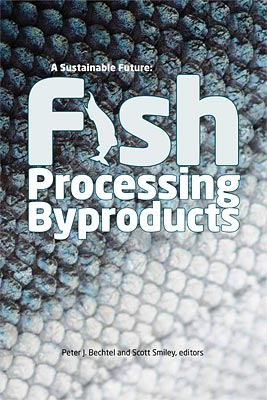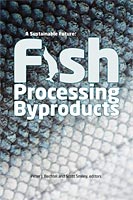
Montlake process for utilization of salmon processing waste in Alaska
P. Nicklason, P. Stitzel, H. Barnett, R. Johnson, and M. Rust
- Price: $1.50
 This is part of A Sustainable Future: Fish Processing Byproducts
This is part of A Sustainable Future: Fish Processing Byproducts| Format | Price | |
|---|---|---|
| PDF download [657.7 KB] | $1.50 | Add to Cart |
Description
Short seasons and inconsistent volume of waste material make it difficult to use existing technology to recover salmon and other fish processing waste in many areas of Alaska. A new process was developed that combines wet reduction technology, acid stabilization, and drum drying of fish waste. Products are high protein–low ash meal, oil, and gelatin. Addition of 0.8% formic acid to deboned and semi-processed fish meat and viscera allows short-term storage at ambient temperatures. Stored acidified material can be dried when capacity is available, allowing more hours of operation that will accommodate smaller production lines. Muscle-containing fish cuts such as heads, trim, and frames are first mechanically deboned. The recovered muscle tissue is cooked and decanted to produce meal cake and oil. Raw wet viscera are ground and combined with the decanter cake to form a blended meal. The blended meal can be immediately dried on a drum dryer or stabilized with 0.8% formic acid and stored for later drying. The finished meal is high in protein and low in ash, and has good binding properties that allow a rugged feed particle to be extruded with no added gelatinized starch as is the case with conventional fish meal–based feeds. In a separate processing line, a crude gelatin fraction is extracted from the bones by wet heat and straining. The crude gelatin is also dried on a drum dryer. Short-term storage of material reduces equipment requirements and increases working days for a given amount of material. This, in turn, allows the design of portable process units that can service more than one fishery and further extend operating days. The Montlake process and Montlake meal are named after NOAA's Northwest Fisheries Science Center Montlake lab in Seattle where the work was initiated and conducted.
Item details
- Item number: AK-SG-10-02r
- Year: 2010
- DOI: https://doi.org/10.4027/sffpb.2010.18



